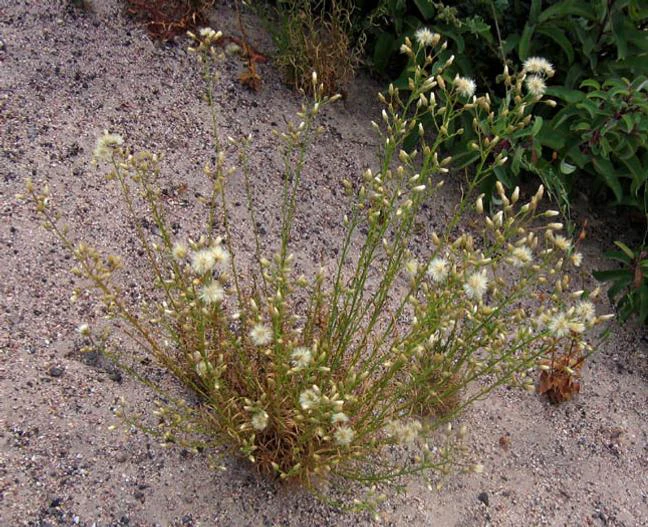Malibu Baccharis
(Baccharis malibuensis)
Malibu Baccharis (Baccharis malibuensis)
/
/

Anthony Valois and the National Park Service
Public domain
Image By:
Anthony Valois and the National Park Service
Recorded By:
Copyright:
Public domain
Copyright Notice:
Photo by: Anthony Valois and the National Park Service | License Type: Public domain | License URL: https://creativecommons.org/public-domain/ | Uploader: Stickpen | Publisher: Wikipedia Commons


Estimated Native Range
Climate Requirements for Poinciana, Florida
| This Plant | Your Site | Plant Suitability for Your Location | ||
|---|---|---|---|---|
| • Precipitation | 14" - 18" | 48" | Aquatic | Aquatic |
| • High Temp. | 79°F - 92°F | 92°F | Your summers may be too hot for this plant. | Too hot |
| • Low Temp. | 35°F - 46°F | 49°F | OK, but your winter temperatures are warmer than normal for this plant | OK |
This plant may not grow well at your location - your precipitation is too high.
Summary
Baccharis malibuensis, commonly known as Malibu baccharis, is a rare evergreen shrub native to the coastal sage scrub, chaparral, and oak woodlands of the Santa Monica Mountains in southern California. It typically grows to heights of 16-40 inches (40-100 cm) with a similar spread. Malibu baccharis has a rounded form with narrow, glandular leaves that exude a sticky substance. From late summer to fall, it produces elongated clusters of small, creamy-white flowers that are attractive to pollinators but not particularly showy to humans. The plant does not produce notable berries or fruit but is valued for its ability to thrive in poor, dry soils and its use in habitat restoration projects.
Malibu baccharis is an important plant for erosion control and is often used in revegetation efforts where its native habitat is being restored. It is drought-tolerant once established, requiring minimal supplemental water, and prefers well-drained soils in full sun to part shade. While it is not commonly found in the nursery trade due to its rarity, it can be a valuable addition to native plant gardens and xeriscapes. Gardeners should be aware that it can be sensitive to overwatering and root rot. Malibu baccharis is threatened in the wild due to habitat loss from urban development and damage from off-road vehicles.CC BY-SA 4.0
Malibu baccharis is an important plant for erosion control and is often used in revegetation efforts where its native habitat is being restored. It is drought-tolerant once established, requiring minimal supplemental water, and prefers well-drained soils in full sun to part shade. While it is not commonly found in the nursery trade due to its rarity, it can be a valuable addition to native plant gardens and xeriscapes. Gardeners should be aware that it can be sensitive to overwatering and root rot. Malibu baccharis is threatened in the wild due to habitat loss from urban development and damage from off-road vehicles.CC BY-SA 4.0
Plant Description
- Plant Type: Shrub
- Height: 6-10 feet
- Width: 6-10 feet
- Growth Rate: Moderate
- Flower Color: N/A
- Flowering Season: Summer, Fall
- Leaf Retention: Evergreen
Growth Requirements
- Sun: Full Sun, Part Shade
- Water: Low, Medium
- Drainage: Medium, Fast
Common Uses
Deer Resistant, Drought Tolerant, Erosion Control, Low Maintenance
Natural Habitat
Native to coastal sage scrub, chaparral, and oak woodlands of the Santa Monica Mountains in southern California
Other Names
Common Names: Malibu Baccharis Or Coyote Brush, Malibu Seepwillow
Scientific Names: Baccharis malibuensis
GBIF Accepted Name: Baccharis malibuensis